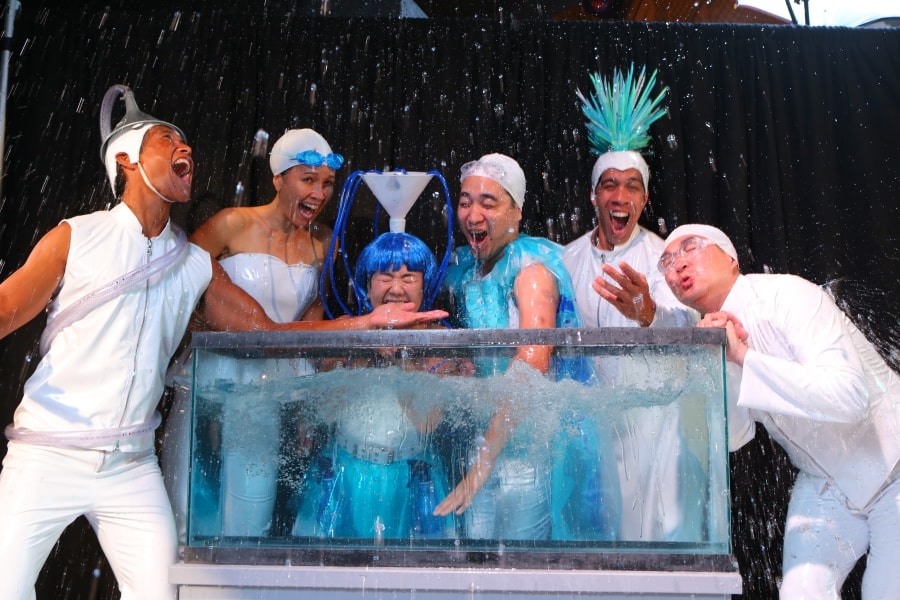In Hawaiian, the word for water is wai, and the Hawaiian word for wealth is waiwai.
“So, essentially, ‘much freshwater’ is equal to wealth,” said Eric Johnson, artistic director of Honolulu Theatre for Youth. The connection between water and Hawaiian culture is what inspired HTY’s newest show, H2O: The Story of Water and Hawaii. The idea to create a play about water began in 2014 when HTY was producing Grinds, The Story of Food in Hawaii. When the topic of food comes up, water is not far behind.
“Obviously we’re on a tiny island in the middle of a vast sea of water,” Johnson said, and the “huge cultural stories and importance around water became evident when we were doing our work on the food project.”
Following a format HTY has used on several such shows, H2O is a musical devised by the entire company. A six-person cast under Johnson’s direction communicates Hawaii’s history with water through Hawaiian chants, reggae beats, and plenty of the eponymous substance itself—audience members seated in the front rows will be supplied with ponchos. HTY will also bring the show to neighboring islands, and, because every island has a different geology, the script will be adapted for each island.
HTY partnered with 10 organizations, among them the National Oceanic and Atmospheric Organization, the Johnson Ohana Charitable Foundation, and Sustainable Coastlines, which provided resources, expertise, community outreach, and even some “water heroes” who will appear in the production.
All is not flowing and blissful where the subject of water is concerned. According to a January report by the World Economic Forum, the amount of plastic in the ocean will outweigh marine life by 2050, and Hawaii is on the front lines of the problem: It sits in close proximity to the Great Pacific Garbage Patch, an area in the North Pacific Ocean filled with pollution, mainly plastic.
“You get moments like that, and it just sort of stops you cold,” Johnson said. “Especially when you live on an island and are surrounded [by water] and this is such a part of your life.”
HTY, along with its organizational partners, sent a kit containing plastic samples retrieved from beach cleanups to local schools planning to attend the production. The students will turn the samples into sculptures, each weighing one ounce, to symbolize the amount of plastic the average American uses every three hours. The artwork will be incorporated into the play and then displayed at the Honolulu Museum of Art. Later, Sustainable Coastlines will turn the work into shampoo bottles.
The theatre expects 30,000 students to participate, not counting families who will be in attendance on weekends. School performance dates are April 4–May 20, and family shows run April 8–23 and. The tour will visit neighboring islands next season.
Does Johnson hope the play will have a trickle-down effect? At the least, he hopes, “You’re creating a sort of interesting curiosity toward something that is taken for granted in our normal everyday life.”


